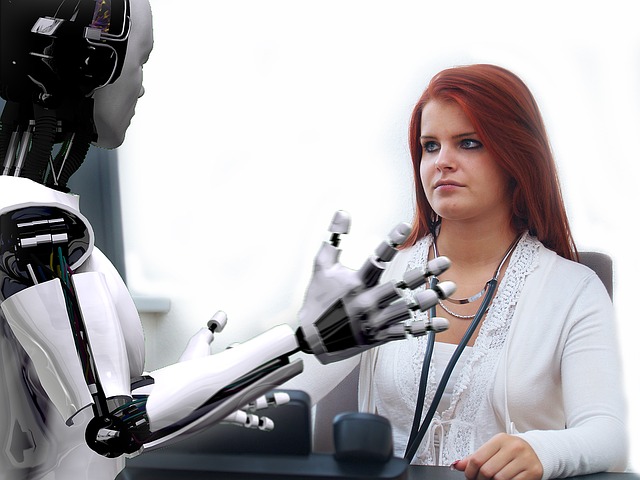OK, so I know the headline to this post isn’t really the sort a stable and serious scientist, or even a futurist, should be asking. But I was asked this question in Quora, and thought it warranted some thought. So here’s my answer to this mystery that had hounded movie directors for the last century or so!
If Japan actually managed to create the huge robots / exoskeletons so favored in the anime genre, all the generals in all the opposing armies would stand up and clap wildly for them. Because these robots are practically the worst war-machines ever. And believe it or not, I know that because we conducted an actual research into this area, together with Dr. Aharon Hauptman and Dr. Liran Antebi,
But before I tell you about that research, let me say a few words about the woes of huge humanoid robots.
First, there are already some highly sophisticated exoskeleton suits developed by major military contractors like Raytheon’s XOS2 and Lockheed Martin’s HULC. While they’re definitely the coolest thing since sliced bread and frosted donuts, they have one huge disadvantage: they need plenty of energy to work. As long as you can connect them to a powerline, it shouldn’t be too much of an issue. But once you ask them to go out to the battlefield… well, after one hour at most they’ll stop working, and quite likely trap the human operating them.
Some companies, like Boston Dynamics, have tried to overcome the energy challenge by adding a diesel engine to their robots. Which is great, except for the fact that it’s still pretty cumbersome, and extremely noisy. Not much use for robots that are supposed to accompany marines on stealth missions.
But who wants stealthy robots, anyway? We’re talking about gargantuan robots, right?!
Well, here’s the thing: the larger and heavier the robot is, the more energy you need to operate it. That means you can’t really add much armor to it. And the larger you make it, the more unwieldy it becomes. There’s a reason elephants are so sturdy, with thick legs – that’s the only way they can support their enormous body weight. Huge robots, which are much heavier than elephants, can’t even have legs with joints. When the MK. II Mech was exposed at Maker Faire 2015, it reached a height of 15 feet, weighed around 6 tons… and could only move by crawling on a caterpillar track. So, in short, it was a tank.
And don’t even think about it rising to the air. Seriously. Just don’t.
But let’s say you manage to somehow bypass all of those pesky energy constraints. Even in that case, huge humanoid robots would not be a good idea because of two main reasons: shape, and size.
Let’s start with shape. The human body had evolved the way it is – limbs, groin, hair and all – to cope with the hardships of life on the one hand, while also being able to have sex, give birth and generally doing fun stuff. But robots aren’t supposed to be doing fun stuff. Unless, that is, you want to build a huge Japanese humanoid sex robot. And yes, I know that sounds perfectly logical for some horribly unfathomable reason, but that’s not what the question is about.
So – if you want a battle-robot, you just don’t need things like legs, a groin, or even a head with a vulnerable computer-brain. You don’t need a huge multifunctional battle-robot. Instead, you want small and efficient robots that are uniquely suited to the task set for them. If you want to drop bombs, use a bomber drone. If you want to kill someone, use a simple robot with a gun. Heck, it can look like a child’s toy, or like a ball, but what does it matter? It just needs to get the job done!
Last but not least, large humanoid robots are not only inefficient, cumbersome and impractical, but are also extremely vulnerable to being hit. One solid hit to the head will take them out. Or to a leg. Or the torso. Or the groin of that gargantuan Japanese sex-bot that’s still wondering why it was sent to a battlefield where real tanks are doing all the work. That’s why armies around the world are trying to figure out how to use swarms of drones instead of deploying one large robot: if one drone takes the hit, the rest of the swarm still survives.
So now that I’ve thrown cold ice water on the idea of large Japanese humanoid robots, here’s the final rub. A few years ago I was part of a research along with Dr. Aharon Hauptman and Dr. Liran Antebi, that was meant to assess the capabilities that robots will possess in the next twenty years. I’ll cut straight to the chase: the experts we interviewed and surveyed believed that in twenty years or less we’ll have –
- Robots with perfect camouflage capabilities in visible light (essentially invisibility);
- Robots that can heal themselves, or use objects from the environment as replacement parts;
- Biological robots.
One of the only categories about which the experts were skeptical was that of “transforming platforms” – i.e. robots that can change shape to adapt themselves to different tasks. There is just no need for these highly-versatile (and expensive, inefficient and vulnerable) robots, when you can send ten other highly-specialized robots to perform each task at a turn. Large humanoid robots are the same. There’s just no need for them in warfare.
So, to sum things up: if Japan were to construct anime-style Gundam-like robots and send them to war, I really hope they prepare them for having sex, because they would be screwed over pretty horribly.


